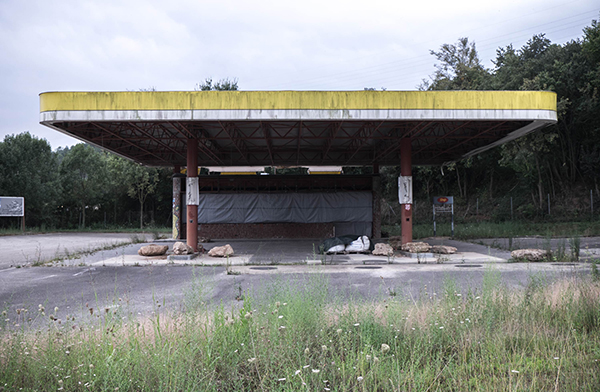What is a brownfield site?

Brownfield sites entered the limelight back in 1998 after the government set a national target to ensure that 60% of all new developments were on brownfield. Since then, it has remained on the political agenda due to its sustainable possibilities and huge potential in helping to mitigate the housing crisis. Indeed, in 2021 the State of Brownfield report, published by The Countryside Charity, found that there was enough brownfield land available to build 1.16 million homes.
What is a brownfield site?
Brownfield sites are basically pieces of land that have had a previous use but are now vacant or abandoned. This includes land that has previously been used for industrial or commercial purposes, such as a factory, petrol station or mill.
Because of their previous uses, brownfield sites may have existing structures on them as well as a risk of contamination in the land itself. Contaminated land means that it could cause harm to people or protected species, or pollute groundwater or surface water.
Contaminants can include:
- Heavy metals
- Asbestos
- Oils and tar
- Chemicals
- Gases
- Radioactive substances
For this reason, technical and professional skills are often required to develop brownfield sites.
What are the benefits of brownfield sites?
Brownfield developments are receiving increasing attention because of their sustainable benefits.
By developing land that has already been used, developers can help to protect virgin green spaces and rural land, which are vital for maintaining environmental health and supporting the reduction of the country’s carbon footprint.
Their development can also help to regenerate urban areas that may be dangerous or visually unattractive due to their abandonment. By bringing them back into use, developers can revitalise the local community, bringing homes, jobs and enjoyable public spaces back into the area. As many brownfield sites have a central and urban location, they make ideal and popular locations for housing, which gives developers a fantastic opportunity to capitalise on desirable locations. For instance, there is a high concentration of brownfield sites in London and the south-east.
The fact that brownfield sites have already been used also means that they are well connected. Water, electricity, sewerage, road networks and amenities will probably already be in place. It can also be easier to obtain planning permission.
What are the risks of brownfield sites?
While brownfield sites certainly have plenty of benefits, there are also some risks that must be carefully considered.
The existence of structures on the site means that their safe destruction and removal may be necessary. It is possible that these will be in poor condition, which means that careful demolition will be needed. It is also possible that the brownfield site is located in a heavily built-up area, which means that noise and dust mitigation strategies will need to be rigorous in order to protect neighbours and passers-by. It is also possible that you will need to negotiate road closures and other traffic management plans to allow construction vehicles to and from the site.
Redeveloping a brownfield site may also come with restrictions on the type of building or property you can introduce. For instance, there may be limits on how many additional storeys you can add.
Flooding is another risk of brownfield sites. A brownfield site such as a paper mill will be located on a waterfront due to its previous reliance on water for its industry. While this will make it an attractive property for buyers, they are also likely to have much higher flood risks.
Because of the likelihood of contamination, extensive risk assessments and surveys will need to be carried out too. Unfortunately, there is no way of knowing what lies beneath the ground until investigations are carried out.
If contamination is found, it will need to be remediated. This remediation could very well sit with you as the developer, despite you not being the cause. This is because it is likely that it happened a long time ago, which means that the responsible company or person is unlikely to be located to pay for it. Discovering contamination during construction can be expensive and time-consuming, and could lead to significant delays on the project. Land contamination can also reduce your ability to include gardens in your development.
However, there is some help available for developers who need to carry out remediation work. The government offers Land Remediation Relief, which is a relief from corporation tax. Thanks to this, it is possible for companies cleaning up land purchased from a third party to receive a tax deduction of 100% plus an additional 50% for expenditure that meets certain qualifying criteria.
One Guarantee’s warranties for brownfield sites
Building on brownfield sites carries additional risks that may only come to light once a site is purchased, when construction begins or even further down the line, which could affect the building warranty you have negotiated.
However, One Guarantee’s building warranties automatically provide protection for risks associated with brownfield sites, giving you and future purchasers valuable peace of mind.
To find out more about our warranties for brownfield developments, get in touch with us today on 01603 218288.